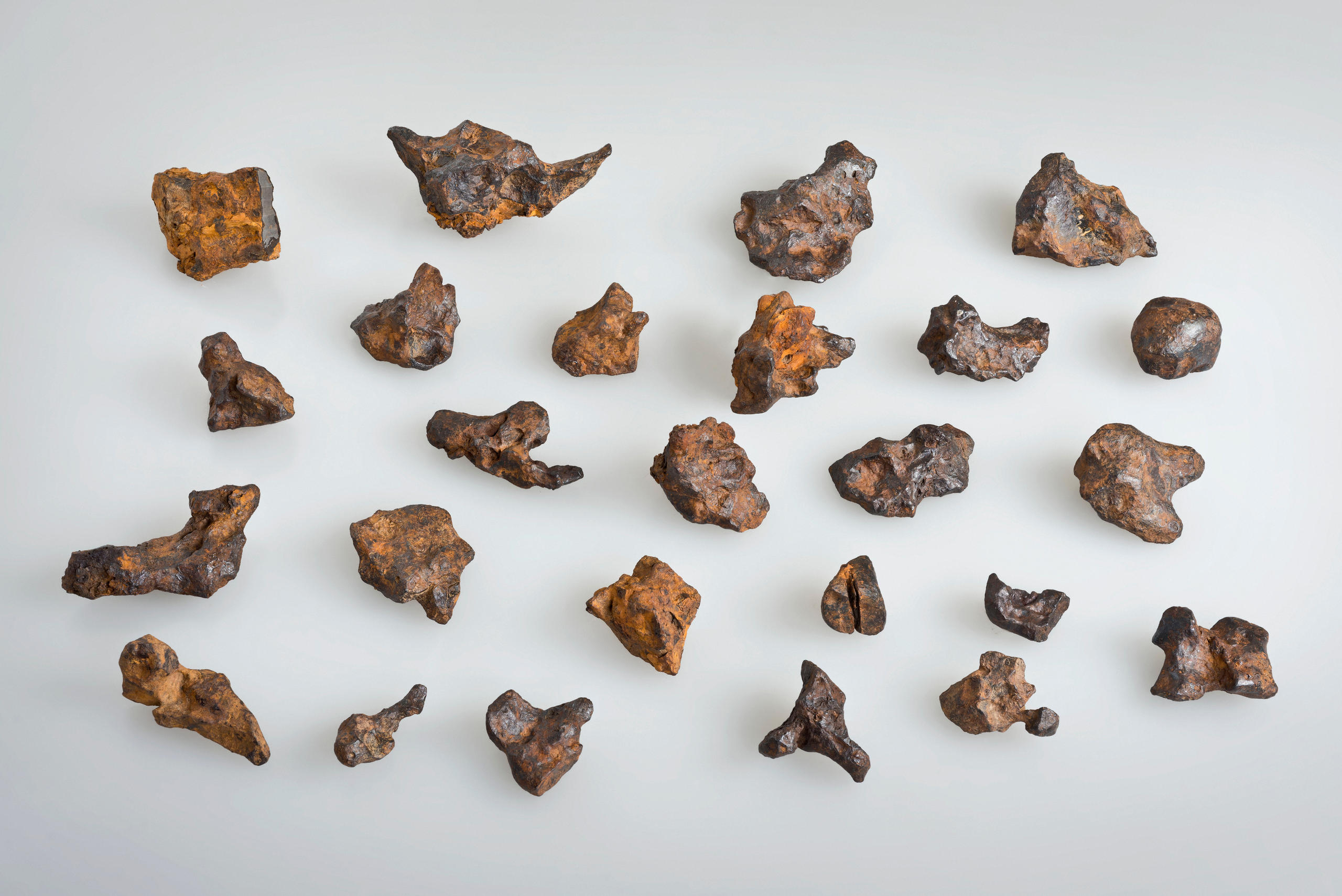
Decades on, hundreds of meteorite pieces found

More than 30 years ago, a Swiss farmer came across a single piece of a meteorite that fell to earth around 160,000 years earlier. Now, a Bern researcher and a small army of meteorite hunters have found hundreds more pieces.
The Bern Natural History Museum announced on Thursday that its search efforts, led by researcher Beda Hofmann, turned up more than 600 fragments over the past few years, in what is one of the three largest scatter fields in Europe.
The Twannberg meteorite broke into hundreds of pieces when it entered earth’s atmosphere. It is named after the mountain in Twann, a community in canton Bern, where it was first found.
Experts have estimated it could have broken into more than 1,000 pieces that could eventually be found. The fragments that researchers have discovered so far are helping them to better understand the dimensions of the scatter field. It was previously thought to be 5 kilometres long, but it could in fact be three times that.
Tests have shown that the meteorite could have had a diameter of six to 20 metres, and a mass of anywhere between 1,000 and 30,000 tons.
What kind of meteorite?
The Twannberg meteorite is rare, one of only six finds in the IIG group – an iron meteorite. Others have been discovered in the United States, Chile and South Africa, though this could turn out to be one of the largest.
Ingo Leya, a professor at the University of Bern who analysed the fragments, said she was surprised at how long the pieces had lasted in the European climate.

Together with researchers in Dresden, Leya’s team was able to date the meteorite crash as having occurred from 100,000 up to 200,000 years ago.
Only eight meteorites have been found in Switzerland before, and the Twannberg is the only one to be found in multiple pieces.
More than 100 fragments are available for public viewing from August 19 at the Bern Natural History MuseumExternal link (link in German).

In compliance with the JTI standards
More: SWI swissinfo.ch certified by the Journalism Trust Initiative















![The four-metre-long painting "Sonntag der Bergbauern" [Sunday of the Mountain Farmers, 1923-24/26] had to be removed by a crane from the German Chancellery in Berlin for the exhibition in Bern.](https://www.swissinfo.ch/content/wp-content/uploads/sites/13/2025/12/01_Pressebild_KirchnerxKirchner.jpg?ver=a45b19f3)













You can find an overview of ongoing debates with our journalists here . Please join us!
If you want to start a conversation about a topic raised in this article or want to report factual errors, email us at english@swissinfo.ch.